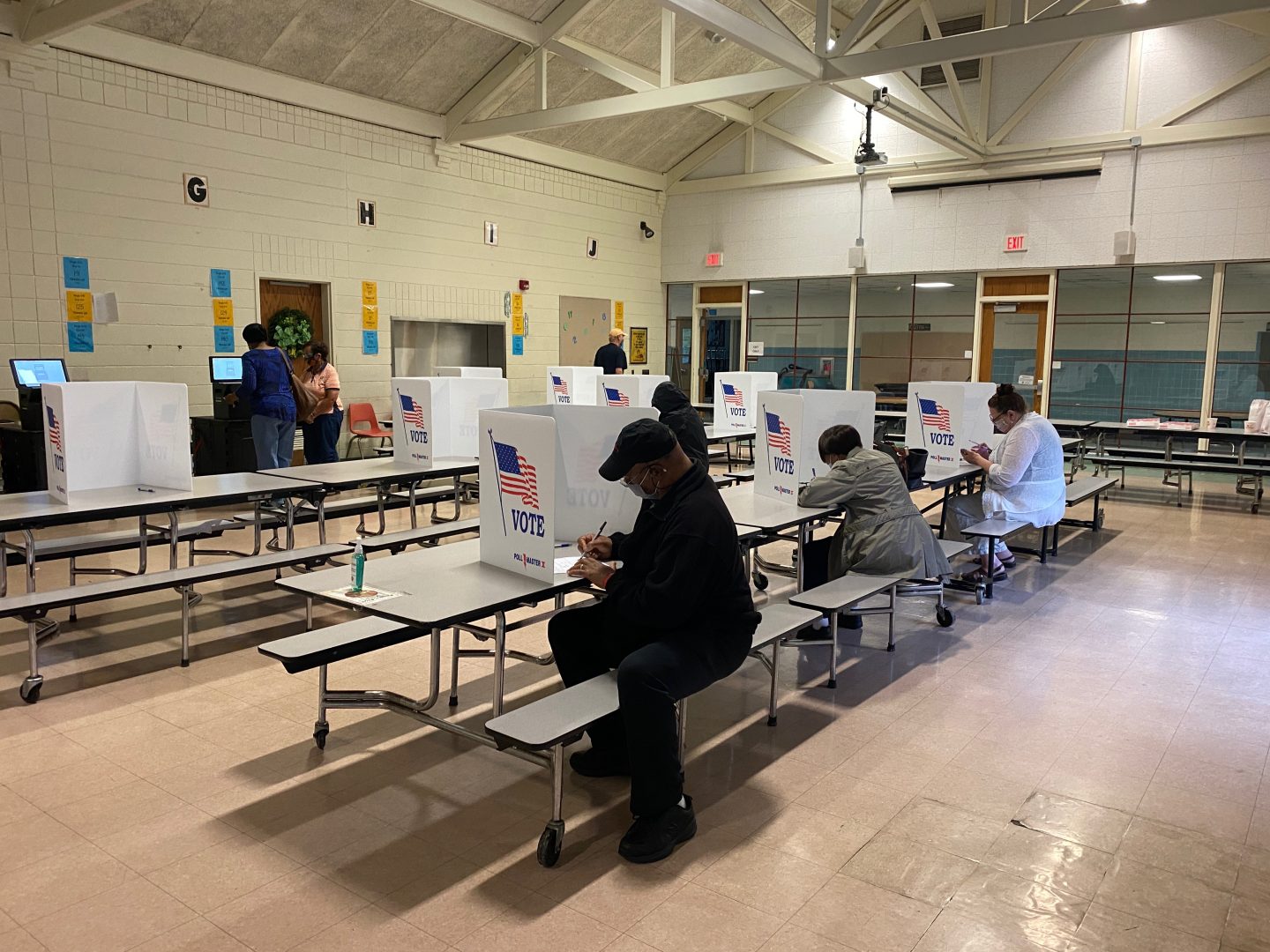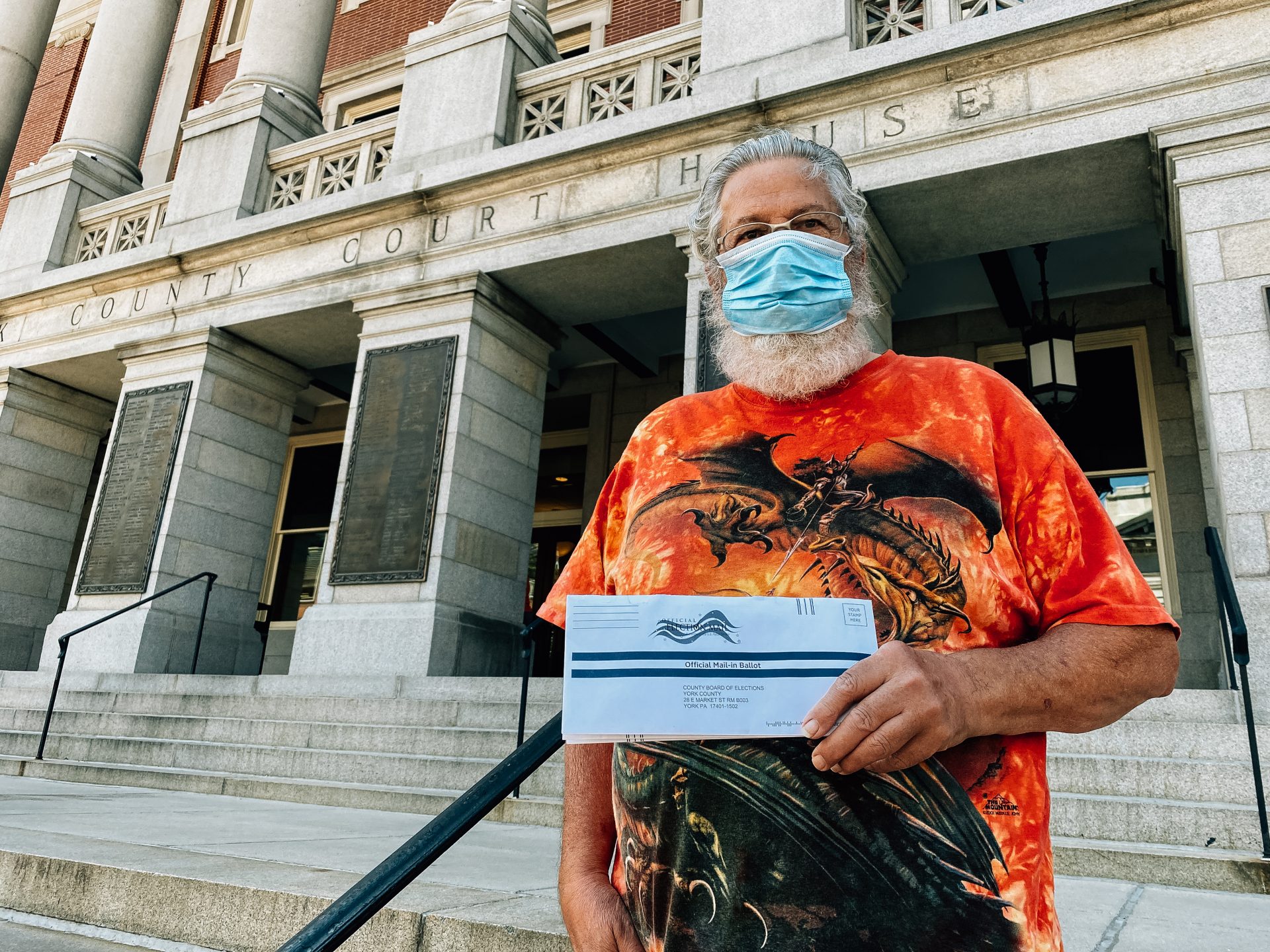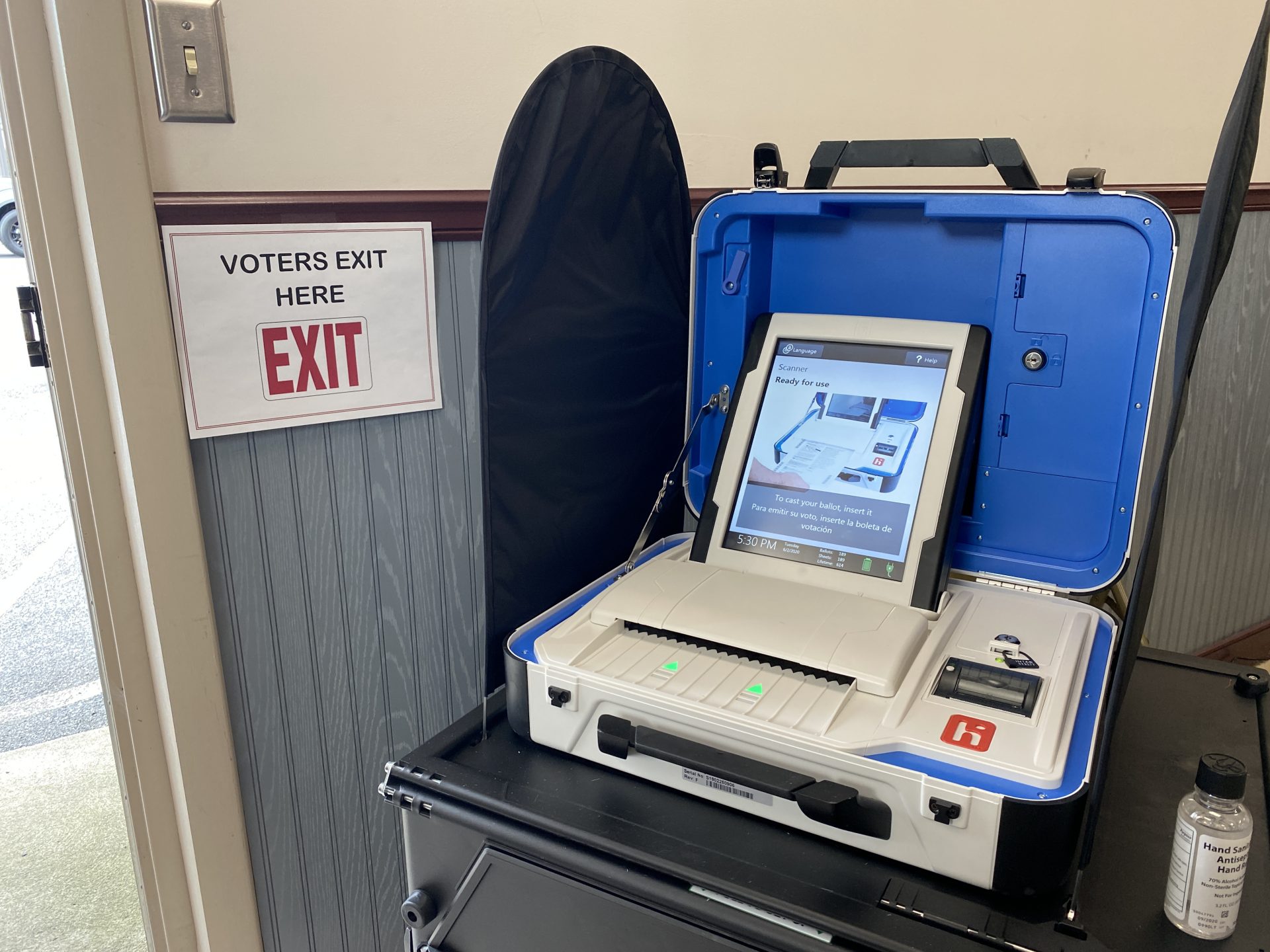
Voters fill out ballots at Susquehanna Township’s 2nd ward in Harrisburg, Pa. on Tuesday, June 2, 2020. Pennsylvania's 2020 primary was rescheduled from April 28 in response to the coronavirus outbreak.
Kate Landis / PA Post

Voters fill out ballots at Susquehanna Township’s 2nd ward in Harrisburg, Pa. on Tuesday, June 2, 2020. Pennsylvania's 2020 primary was rescheduled from April 28 in response to the coronavirus outbreak.
Kate Landis / PA Post

Kate Landis / PA Post
Voters fill out ballots at Susquehanna Township’s 2nd ward in Harrisburg, Pa. on Tuesday, June 2, 2020. Pennsylvania's 2020 primary was rescheduled from April 28 in response to the coronavirus outbreak.
Pennsylvanians are used to knowing election results within hours after polls close, but that’s unlikely tonight, particularly for the statewide races.
First, ballots in six counties — Allegheny, Dauphin, Delaware, Erie, Montgomery and Philadelphia — have an extra week to arrive by mail (so long as they are postmarked no later than today), per Gov. Tom Wolf’s order Monday evening. Those six counties are home to nearly 40 percent of all Pennsylvania voters (about 3.3 million).
Bucks County, with about 460,000 voters, effectively joined that group by winning an emergency petition in its Court of Common Pleas Tuesday. The ruling allows the county to accept ballots postmarked by today that arrive before June 9 and requires officials to separate ballots received after 8 p.m. today for safekeeping in the event of an appeal, according to county spokesman Larry King.
There were more than 420,000 mail-in ballots (slightly less than half of those requested) outstanding as of Monday between Bucks and the six counties covered by Wolf’s order, according to the Department of State’s data.
Also, at least 10 other counties home to more than 800,000 voters won’t start tabulating ballots cast in-person, by mail, or both until Wednesday morning, officials there say.
That means counties home to half of Pennsylvania’s registered voters won’t start processing some or all ballots until tomorrow at the earliest.
Basically, the decision to wait is tied to the historic number of ballots cast by mail in a Pennsylvania election: 1.8 million, to be exact, 17 times as many as during the 2016 primary. (In addition to the pandemic, the 2020 primary is the first since state law changed so that Pennsylvanians don’t need an excuse to vote by mail.)
Mailed ballots take some time to process because they’re sent back enclosed within two envelopes to ensure secrecy. And election workers need to cross-reference the poll books and mailed ballot return lists to ensure people vote only once, says Dauphin County election director Jerry Feaser.
And even if they wanted to, counties weren’t allowed to count any of those mailed ballots prior to 7 a.m. on Election Day. (That’s 11 hours earlier than in the past, thanks to another recent election code change). But some counties don’t have enough staff to process ballots while also running the election itself.

A voter stops for a photo before delivering his ballot to a drop box at the York County Court House on June 1, 2020.
Other counties — including Lancaster and Bucks — encountered scanner problems at the polls today that might delay the count.
Lancaster and Bucks counties have different machines and reported different issues.
In Lancaster, scanners aren’t reading barcodes correctly at some precincts “scattered” throughout the county, according to election director Randall Wenger.

Kate Landis / PA Post
The voting machines at the Mount Joy Borough Municipal Office were among those having issues on June 2, 2020.
In Bucks, some ballots were printed (by a private company) on paper that’s slightly too wide to fit through precinct scanners. Those ballots will be trimmed or saved for processing later at the main elections office on different scanners or, if necessary, by hand, King said.
It’s unclear how many ballots are affected so far in Bucks, which is using ClearBallot machines.
Between 1 and 4 percent of ballots cast so far today in Lancaster appear to be impacted, according to County Commissioner and Election Board Chair Ray D’Agostino.
Lancaster’s printing vendor attempted to address the barcode issue after it affected a small number of ballots last fall by producing primary ballots using lower speed printers. That doesn’t appear to have fixed the problem, however, D’Agostino said.
Any ballot that was not able to be scanned today at the polling place will be counted at the county’s main elections office using the same scanners officials are using to count mail-in ballots, which have been functioning all day with no issues, he said.
State law requires counties to finish tabulating votes within a week of the election.
PA Post’s Ben Pontz contributed to this report.

Sometimes, your mornings are just too busy to catch the news beyond a headline or two. Don’t worry. The Morning Agenda has got your back. Each weekday morning, host Tim Lambert will keep you informed, amused, enlightened and up-to-date on what’s happening in central Pennsylvania and the rest of this great commonwealth.
The days of journalism’s one-way street of simply producing stories for the public have long been over. Now, it’s time to find better ways to interact with you and ensure we meet your high standards of what a credible media organization should be.